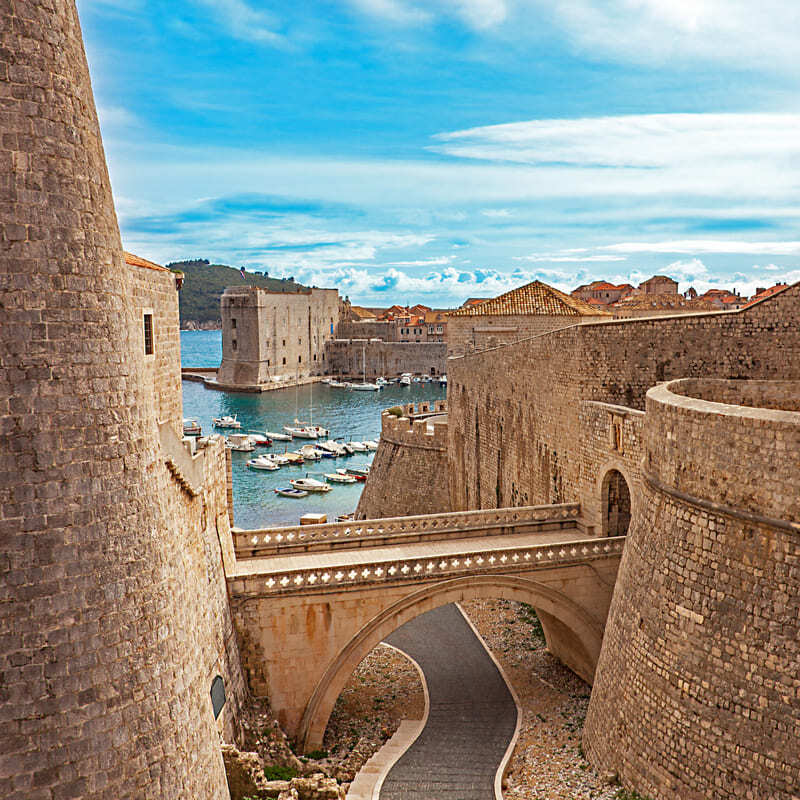First in Europe to introduce a Digital Nomad Visa (DNV), Croatia has officially asserted its status as the ‘most liked’ Nomad hub in a survey conducted by NomadList. Is it the picturesque villages straddling the Adriatic remote workers can’t get enough of? The local friendliness? Or, perhaps, the pristine coastline and teal-colored ocean?
There are many reasons why Croatia would come out on top of a survey like this, especially now that that more Americans have become acquainted with its natural and man-made wonders, leading to a 132% increase in overnight stays throughout 2022. Effectively, it is now the fastest-recovering tourist destination in Europe post-pandemic.
But why, exactly, has it become the number one haven for long-term travelers in recent years when it faces such heavy competition?
Why Has Croatia Become So Popular Among Digital Nomads?
According to the yearly survey published by NomadList, one of the most reliable sources for up-to-date data on digital nomadism, Croatia is the ‘most liked’ country out of 15 entries, with a rating of 4.9. In fact, it shares the honor with Japan, which also ranks atop the chart with 4.9 points, though it stands out as the highest-peaking European country on the list.
As Total Croatia News reports, this is proof Hrvatski society has warmly embraced nomads and is incredibly receptive to slow travel: ‘every grandmother with a room to rent talks about the potential of digitalni nomadi.’ A pioneer known to have rolled out DNVs sooner than any other European country, Croatia quickly earned the trust of nomads:

Having boldly launched the migration path as early as March 2021, while Covid wreaked havoc in the continent and many nations were still hesitant to reopen for tourists, let alone new residents, it ensured it stayed on top of the latest trend, outpacing other Mediterranean powers and claiming its title as Europe’s top digital nomad hotspot.
Croatia has not merely enshrined digital nomadism in law: it prepared its cities to welcome the new temporary residents, be it establishing digital nomad ‘villages’ in Zadar, where nomads could move to for a minimum of two weeks, and stay up to 6 months, or opening several co-working spaces in the capital city of Zagreb, its leading financial center.

On top of that, long-term home rentals have dominated AirBnB listings across Croatia, a clear sign digital nomads are priority customers heading into 2023. They will be able to find entire rental units in Crikvenica or Opatija, two popular resort towns, for as cheap as USD $504 a month, directly facing the ocean and within walking distance of the main sights.
You’ll Never Run Out Of Fun Things To Do In Croatia

Based in Croatia, nomads will never run out of fun things to do, such as strolling quaint towns dating back centuries, exploring ancient fortresses, island-hopping along the Adriatic coast, or sampling the award-winning cuisine, ranked the 17th best in the world. If it’s culture you’re after, that Old World charm is most easily experienced in cities like:
- Zagreb, the Croatian capital, whose skyline is dominated by an imposing 13th-century cathedral, skyscrapers and Neo-Renaissance buildings;
- Pula, in the Istrian Peninsula, home to an arena and other well-preserved Roman landmarks;
- Zadar, a coastal gem packed with historical monuments, including a one-of-a-kind Romanesque round church and an imposing belfry;
- Split, a city that expanded out from the walls of a palace originally built for a Roman Emperor in the 4th century;
- Trogir, a small island-municipality well-supplied with Late Roman churches and cobblestone alleyways;
- Hvar, the main settlement on Hvar Island, easily recognized for its hilltop fort and traditional Dalmatian stone-built houses;
- Dubrovnik, a compact walled city straight out of a Chivalric romance, featuring drawbridges, impressive turrets and medieval piazzas.

Often overlooked, the Croatian capital is favored by male nomads, appearing at number 12 on NomadList’s ranking of ‘most liked cities by men’. With a high concentration of cafes and bars, it is a highly sought after city break known for its bustling street life and Bohemian atmosphere. On this particular list, Split ranks the highest at number four.
Other Croatian cities mentioned include Zadar, Dubrovnik and Hvar, the 6th, 21st, and 28th most popular destinations for ‘attractive women’, respectively. In turn, ‘attractive men’ are particularly fond of Zadar, a number 22-peaking beach getaway on the male-based list. Lastly, Croatia is 5th most-visited country by women, and the 24th most-visited overall.

Seven Main Reasons Why Nomads Move To Croatia
In sum, here are the seven main reasons why nomads are moving in droves to Croatia:
- It is the first country in Europe to have launched a DNV
- The cities are prepared to welcome the influx of temporary residents
- In general, Croatians are open to hosting nomads
- Long-term stay options are plentiful
- The cultural offer is incredibly vast
- Coastal areas enjoy a year-round warmer weather
- There are several work-friendly cafes and co-working spaces to pick from, especially in Zagreb
You can read the full NomadList report here.

